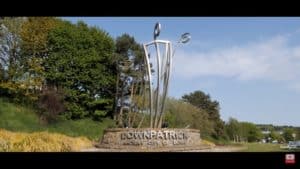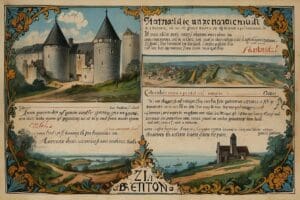Northern Ireland: A Great Tour of Two Incredible Cities
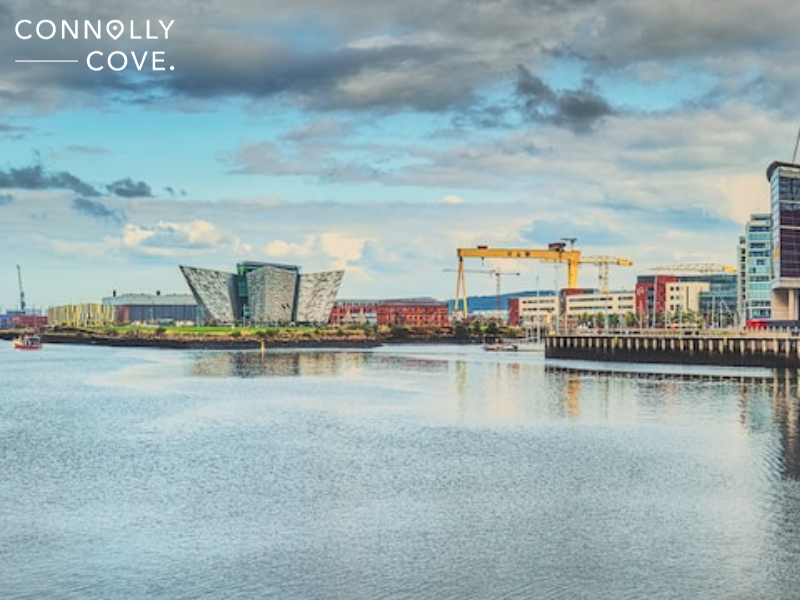
Updated On: April 18, 2024 by Marwa Abdel Moniem
Have you ever thought of visiting a land with both charm and character? How about Northern Ireland? Northern Ireland is a unique blend of history, culture, and natural beauty. Visiting Northern Ireland can be a rewarding experience with its rich history and vibrant culture. In this article, we will tell you about two of the most visit-worthy cities in Northern Ireland: Belfast and Derry-Londonderry.
Table of Contents
Exploring the Best of Belfast
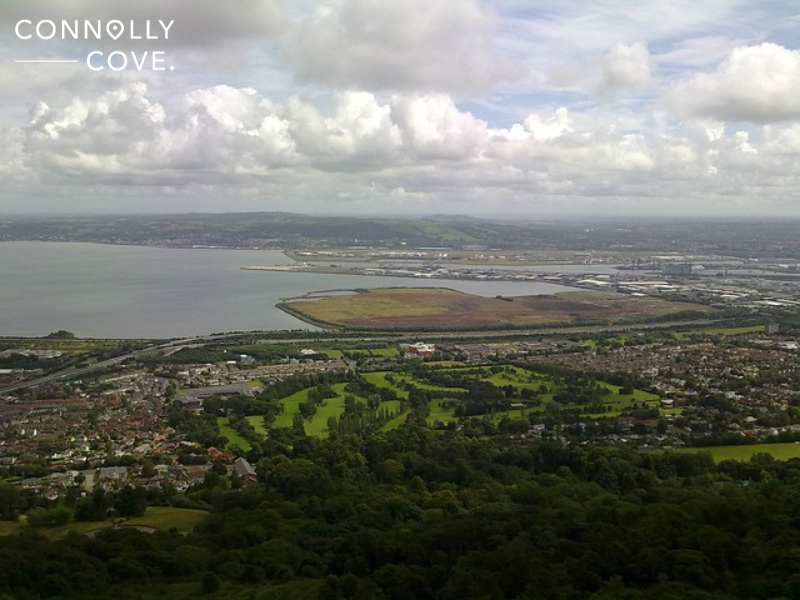
Belfast is the capital of Northern Ireland. It is a vibrant urban centre with a growing arts and culture scene. It stands out as the economic and cultural hub of the region. With a rich history and a modern, forward-looking identity, Belfast is a city where the past and present go along pretty well.
Belfast is known for its shipbuilding heritage. Well, we’re talking about the birthplace of the ill-fated Titanic! If you choose Belfast for your next destination, you’re in for a good deal of stunning architecture and natural beauty.
The city’s welcoming inhabitants add to the comfort of the journey, with friendly locals always ready to strike up a conversation. The Belfastians do contribute to the warm and lively atmosphere of Belfast. This is a must-visit destination for those seeking history and culture sealed with a smile. Here are some of the most notable attractions in Belfast!
The Titanic Belfast Museum
Suppose you have seen Titanic on the big screen. In that case, you will appreciate the remarkable special effects and stunning cinematography that depicted the tragic story of the sunken ocean liner. How about if we tell you that you can embark on a journey through time and delve into the intricacies of Titanic’s construction, her opulent interiors, the lives of the passengers and crew, and the fateful night of 15 April 1912, when the ship tragically sank.
The Titanic Belfast Museum is a captivating tribute to one of the most tragic events in maritime history. Located in the heart of Belfast, this extraordinary museum stands on the very spot where the RMS Titanic was constructed over a century ago. The museum’s sleek and modern design mirrors the ship’s bow, creating a striking visual homage to the vessel.
The museum is housed within a contemporary building designed to resemble the prow of the Titanic itself. Inside, visitors are taken on self-guided tours through nine galleries that provide interactive exhibits, multimedia displays, and meticulously preserved artefacts and memorabilia.
A Shipyard Ride stimulates the shipbuilding process, offering visitors a sense of what it was like to construct the Titanic in the early 20th century. The outdoor area known as the Titanic Slipways allows visitors to walk on the same ground where the Titanic was built, offering a tangible connection to the ship’s history.
Visitors can also explore the SS Nomadic, the last remaining White Star Line ship in existence, which was used to transport passengers to the Titanic from Cherbourg, France. The Nomadic has been meticulously restored and is an extension of the museum’s story. It is quite an immersive experience that you shouldn’t miss.
The Murals of Belfast
These are large, colourful, and often politically themed paintings that are displayed on the sides of buildings and walls throughout the city. These murals have been a form of public art and political expression for decades, and they reflect the complex and divided history of Northern Ireland, particularly the conflict known as “the Troubles” between the late 1960s and the late 1990s.
You know you’re standing in front of a Republican Mural when you see depictions of political leaders, historical events, and symbols of Irish nationalism and resistance. That’s unlike Unionist Murals, which often depict British flags, historical figures, and symbols of Unionism and loyalty to the UK.
However, since the Good Friday Agreement of 1998 and the subsequent peace process, the nature and content of the murals have evolved. Many murals have become more focused on promoting reconciliation, community development, and cultural heritage rather than political messages.
Those murals are mainly seen in neighbourhoods like Falls Road and Shankill Road in West Belfast and Newtownards Road in East Belfast.
The Cathedral Quarter
If you’re looking for a place that literally has it all, you’re in the right spot —the Cathedral Quarter in Belfast. This vibrant and culturally rich district is nestled in the heart of the city. It is renowned for its lively atmosphere, a juxtaposition of old and new, and a captivating mix of art, music, and history.
At its centre stands the stunning St. Anne’s Cathedral, a masterpiece of neo-Romanesque architecture, which lends its name to the district. The cobbled streets and alleyways of the Cathedral Quarter are lined with a diverse array of restaurants, art galleries, and theatres, making it a hub for artists and creatives.
The Cathedral Quarter derives its name from the stunning St. Anne’s Cathedral, an iconic building that dominates the area. The cathedral itself has been a focal point of the district since its construction in the late 19th century.
One of the defining features of the Cathedral Quarter is its strong connection to the arts and culture. You’ll find numerous platforms that showcase the creativity of Belfast’s local talent. The MAC (Metropolitan Arts Centre) is a contemporary art centre that hosts exhibitions, performances, and workshops, making it a cultural focal point of the area.
The Cathedral Quarter is not just about culture and entertainment, though. It’s also an excellent place for shopping and exploring unique boutiques. You can find independent shops selling everything from fashion and accessories to arts and crafts. This is a great place to discover one-of-a-kind items that will surely quench your thirst for shopping.
Steeped in history and pulsating with contemporary energy, the Cathedral Quarter is a must-visit destination for anyone seeking to experience Belfast’s dynamic cultural scene.
Giant’s Causeway
Just a short drive from Belfast, nature enthusiasts will find what they love the best — the scenic beauty embodied in the Giant’s Causeway. Situated on the rugged north coast of Northern Ireland, Giant’s Causeway is known for its hexagonal basalt columns, which were shaped by volcanic activity 60 million years ago.
Named a UNESCO World Heritage Site, this natural wonder has never failed to captivate its visitors. The site features not only the six-sided columns but also other intriguing geological formations, including basalt cliffs, sea caves, and stunning coastal vistas.
Legend has it that the causeway was created by the mythical giant Finn McCool, who built it as a pathway to Scotland to challenge a rival giant, Benandonner. Well, a Visitor Centre is there to provide information about the formation and history of the site, as well as the local legends and stories passed down through generations. You will get to the bottom of it all!
Exploring the Giant’s Causeway is a unique and unforgettable experience, allowing visitors to walk among the columns, climb the cliffs, and take in the breathtaking scenery. The Giant’s Causeway is also part of a larger coastal landscape that offers opportunities for hiking, bird-watching, and soaking in the natural beauty of the rugged Northern Irish coastline. It is such a beauty to the beholder!
Derry-Londonderry: A City with Dual Name
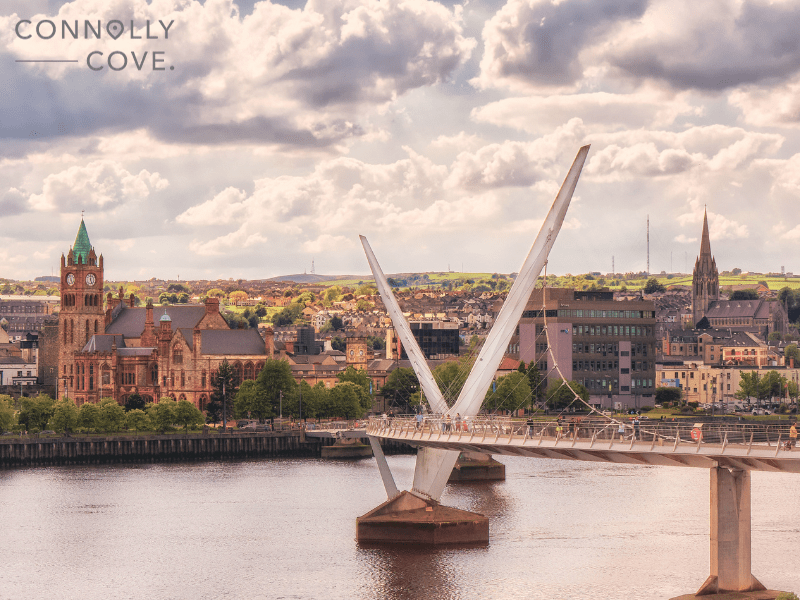
What a unique dual name this city has! Well, that was intended to reflect the complex cultural and political past of this city in Northern Ireland. Derry” is preferred by those who identify as Irish nationalists and Catholics, as it emphasises the city’s historical and cultural ties to Ireland. On the other hand, “Londonderry” is favoured by those who identify as unionists and Protestants, highlighting the city’s connection to the United Kingdom.
Derry-Londonderry is located on the banks of the Foyle River and is known for its stunning landscapes and ancient architecture. Today, the city is a vibrant and evolving cultural hub known for its lively arts scene. Visiting this city would be like getting up close and personal with its historical and cultural marvels, as well as natural beauty. Here are some of the attractions travellers can explore and enjoy in Derry-Londonderry!
The City Walls
Derry-Londonderry is renowned for its historic and intact city walls that date back to the 17th century. Built to defend the city in turmoil, these walls stand as evidence of the pivotal role played by the city during the period of conflict in the region, known as the Troubles.
These iconic walls encircle the city’s historic centre, offering a unique opportunity to walk along and enjoy panoramic views of the Foyle River, the landmark buildings, and the surrounding countryside. This is truly a place where history and nature meet.
The Guildhall
Now, this is something to see! A neo-Gothic masterpiece in the heart of Derry that was built in 1890 during the height of the Victorian era. Guildhall is a reflection of the city’s enduring heritage and serves as a hub of cultural activity.
Its architectural style is a striking blend of neo-Gothic and neo-Renaissance influences, featuring a grand facade with intricate stone carvings, pointed arches, and decorative turrets. The building’s exterior is adorned with statues and ornate details that reflect the era’s penchant for architectural grandeur.
One of the Guildhall’s most distinctive features is its clock tower, which rises above the city skyline. The tower’s large clock face is not only functional but also a notable landmark visible from various points in the city. The clock tower also houses a bell that strikes the hour, further adding to the Guildhall’s character and charm.
Inside, the interior is equally impressive, and visitors are treated to a stunning combination of Victorian luxury with elements of local culture. The main hall is a spectacular space with a magnificent stained-glass window, which is the centrepiece of the building. This window depicts various historical scenes and figures from the city’s past, celebrating Derry-Londonderry’s unique heritage.
This Grade A-listed building serves as the seat of the local government. Still, it is also a thriving cultural centre, offering a venue for concerts, exhibitions, and various community events. Guildhall is a place where the past and present converge, making it an essential landmark in Derry-Londonderry’s vibrant tapestry.
The Museum of Free Derry
For those interested in the Troubles-era history, the Museum of Free Derry provides invaluable insights into the conflict’s impact on the local community. The museum is situated in the Bogside area of Derry, which was a focal point for many of the civil rights marches and protests during the Troubles, a decades-long sectarian conflict that shaped Northern Ireland in the latter half of the 20th century.
The Museum of Free Derry is a vital institution particularly dedicated to preserving the memory of Bloody Sunday on January 30, 1972, when British soldiers killed 14 unarmed civil rights advocates and marchers.
It is housed in a modern building, contrasting with the historic surroundings, and its design represents the city’s journey from conflict to reconciliation. Visitors to the Museum of Free Derry are greeted with a wealth of information, exhibits, and multimedia presentations that delve deep into the history and context of the Troubles.
The museum features various artefacts, photographs, documents, and personal testimonies, making it a powerful educational and historical resource. One of the museum’s most striking features is the Wall of Remembrance, which lists the names and ages of the people who died on Bloody Sunday.
Arts & Entertainment Venues
Derry-Londonderry boasts a rich tapestry of arts and entertainment venues that reflect its cultural diversity and historical significance. It is such a dynamic and culturally rich destination in Northern Ireland that it is a real magnet for tourists.
For those seeking a taste of local culture, the Playhouse Theatre is a hub for community-driven performances and creative workshops. This theatre has played an important role in the city’s artistic landscape. It is renowned for its commitment to promoting the arts, fostering creativity, and providing a platform for local and international talents. Its diverse program includes a wide range of performances, from theatre productions and live music to dance and community events, making it a true melting pot of creativity and expression.
Additionally, the city’s Walls often serve as a unique backdrop for open-air events and festivals, immersing visitors in the rich heritage of the area. The Walls of Derry-Londonderry have been transformed into a unique and captivating art venue. They now serve as a canvas for a vibrant display of contemporary art. The juxtaposition of modern artistic expressions against the backdrop of the walls’ rich history creates a mesmerizing fusion of past and present.
Come and Experience the Magic of Northern Ireland!
Whether you’re captivated by the breathtaking beauty of the Giant’s Causeway, drawn to the cultural treasures of Belfast, or simply seeking a tranquil escape in the serene countryside, Northern Ireland offers an unforgettable journey. Its distinguished mix of ancient traditions and modern innovation creates a tapestry of experiences waiting to be explored. So, pack your bags and set out on an adventure that will not only leave you with cherished memories but also a profound appreciation for the charm and charisma of this remarkable corner of the world.



